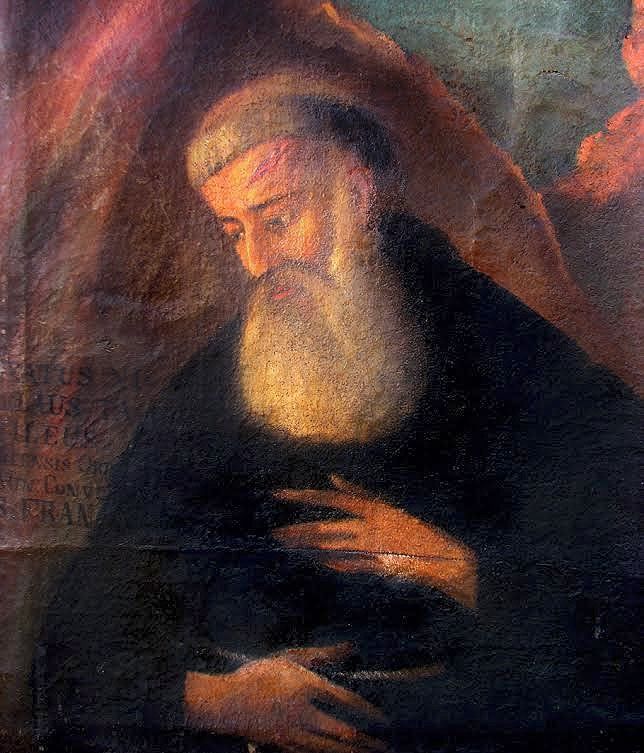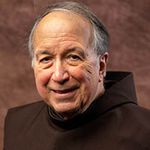Saints Nicholas Tavelic and Companions: Franciscan Friars Martyred in Jerusalem

On November 14, Franciscans honor the memory of Saints Nicholas Tavelic and his three companions, friars who were martyred in Jerusalem on this date in 1391.
Francis sent his brothers to the Holy Land in 1219, but after the fall of Acre (Akko), the last Crusader stronghold in what is now Israel, in 1291, their activities had been halted. However, by the mid-1330s, thanks to the negotiations of King Robert of Sicily and his wife Sancia, friars were able to establish small communities at the Cenacle [traditional site of the "upper room" where the Last Supper was held] and the Holy Sepulchre in Jerusalem, and a decade later in Bethlehem, mainly ministering to European Christian pilgrims and merchants.

The Cenacle on Mount Zion in Jerusalem, a Crusader era structure.
With regard to the local Muslim community, most friars in the Holy Land were content to take Francis’s first advice in the Earlier Rule: “not to engage in arguments and disputes but to be subject to every human creature for God’s sake and acknowledge that they are Christians.” However, in 1391, four friars boldly decided to take Francis’s second approach: “to announce the Word of God, when they see it pleases the Lord . . . so that people may believe. . .and be baptized and become Christians.”
These friars had come to the Holy Land from various countries. One of them, Nicholas Tavelic, was a native of Croatia. He and a French friar, Deodatus of Rodez, had previously labored zealously as missionaries in Bosnia for some time before coming to the Holy Land in 1384. After seven years of ministering quietly in Jerusalem, they and two other friars, Stephen of Cuneo and Peter of Narbonne, were inspired to take a more direct approach.
Preparing a written statement in Arabic, on November 11, 1391, they went to the great Mosque of Omar in Jerusalem and asked to see the Qadi (Muslim official). Reading from their statement, they proclaimed that all people must accept the gospel of Jesus to be saved. They were ordered to retract; when they refused, they were arrested, beaten, and imprisoned, and following their refusal to convert to Islam, they were beheaded before a large crowd. The other friars in Jerusalem were unharmed.

The Jaffa gate in Jerusalem, where Nicholas and his companions were martyred.
These martyrs were venerated as blessed for many years in Order and finally canonized by Pope Paul VI in 1970, who remarked at the time: “We are in the presence today of a paradoxical witness, a shocking witness, a vain witness, because it was not accepted immediately, but is supremely valuable, because it is validated by the gift of self." These martyrs’ motives are not fully known to us, but they did express their conviction that that the summit of perfection lay in conforming oneself not only to Jesus’ life but also to his death.
As Francis said, quoting Jesus: “Whoever acknowledges me before others I will acknowledge before my heavenly Father. . . Whoever loses his life because of me will save it in eternal life.” In all, some 158 friars serving in the Custody of the Holy Land have been martyred since 1335, the vast majority victims of religious violence.

Medieval picture with oil of Saint Nicholas (public domain)
Today Franciscans in the Holy Land follow Francis's "first way," ministering to local Christians and working collaboratively with Muslims to serve the wider population.
Main image: Modern image of St. Nicholas (detail), from Church of St. Francis of Assisi, Šibenik, Croatia
Dominic Monti, OFM
Professor of Franciscan Research in the Franciscan Institute of St. Bonaventure University
Dominic V. Monti, OFM, is a Franciscan Friar of Holy Name Province (USA) and currently professor of Franciscan Research in the Franciscan Institute of St. Bonaventure University. He devoted the greater part of his ministry to teaching the History of Christianity, in particular the history of the Franciscan movement. He has contributed two volumes to the Works of St. Bonaventure series and is author of Francis & His Brothers, a popular history of the Friars Minor.

